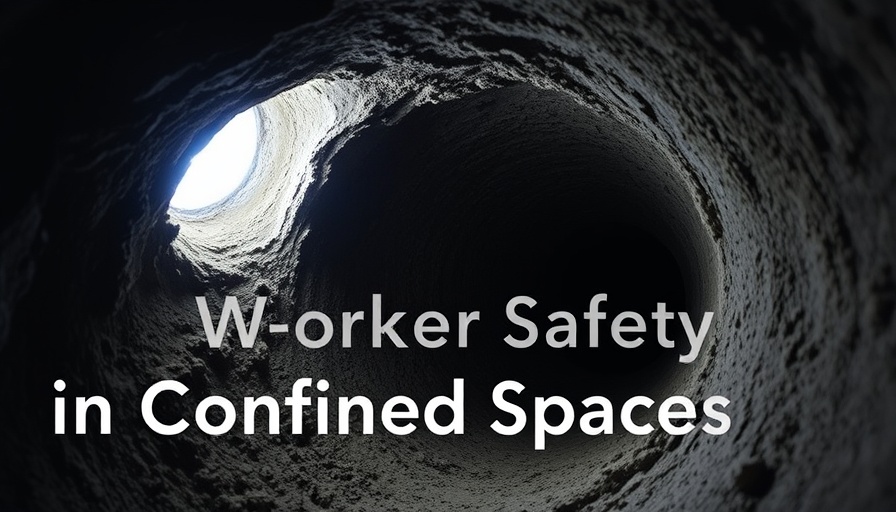
Understanding OSHA Regulations for Confined Spaces
When it comes to ensuring workplace safety, understanding the Occupational Safety and Health Administration (OSHA) regulations is paramount, particularly in the context of confined spaces. Confined spaces are defined by OSHA as areas with limited openings for entry and exit, which are not designed for continuous occupancy. These can include tanks, silos, and crawl spaces. For business owners and facility managers, adherence to OSHA standards not only protects employees but also shields the company from potential financial and legal repercussions.
Why Compliance Matters: Statistics and Insights
According to OSHA, confined spaces pose significant risks, including suffocation, poisoning, and drowning. In fact, the agency reports that over 90 deaths occur annually due to mishaps in confined spaces. In light of such statistics, ensuring compliance with safety standards is not just a regulatory obligation; it represents a moral responsibility toward employees' health and safety.
Best Practices for Safe Operations
Effective management of confined spaces involves several best practices:
- Perform Hazard Assessments: Identify potential hazards associated with confined space entry and work activities.
- Implement Safety Protocols: Develop and communicate clear, written safety protocols to guide employees during confined space operations.
- Training and Drills: Regularly train employees on confined space entry procedures, rescue techniques, and emergency response.
By instituting these best practices, businesses can foster a culture of safety that enhances employee morale and productivity.
Leveraging Technology for Enhanced Safety
The integration of technology plays a vital role in modern workplace safety. Wearable technology and ventilation monitoring systems can significantly improve safety in confined spaces. For instance, real-time monitoring devices can detect harmful gas levels, sending alerts to workers and supervisors instantaneously. This proactive approach can prevent accidents before they occur, ultimately saving lives and reducing operational downtime.
Cost Considerations and ROI
Investing in OSHA compliance and confined space safety measures can yield substantial returns. Businesses that prioritize safety can see an increase in employee productivity, reduced incident rates, and lower insurance premiums. While the initial costs of implementing safety measures may seem steep, they pale in comparison to the potential costs associated with workplace accidents, including medical expenses, legal fees, and lost work days.
Concluding Insights: The Ethical and Economic Imperative
For business owners, property developers, and facility managers, prioritizing OSHA compliance in confined spaces is not merely a regulatory task but a critical aspect of sustainable business practices. Balancing ethical responsibilities with financial prudence can create a safer, more productive work environment. As we move forward, let’s ensure that safety becomes integral to our company culture, aligning profits with the well-being of every employee.
 Add Row
Add Row  Add
Add 




 Add Row
Add Row  Add
Add 

Write A Comment